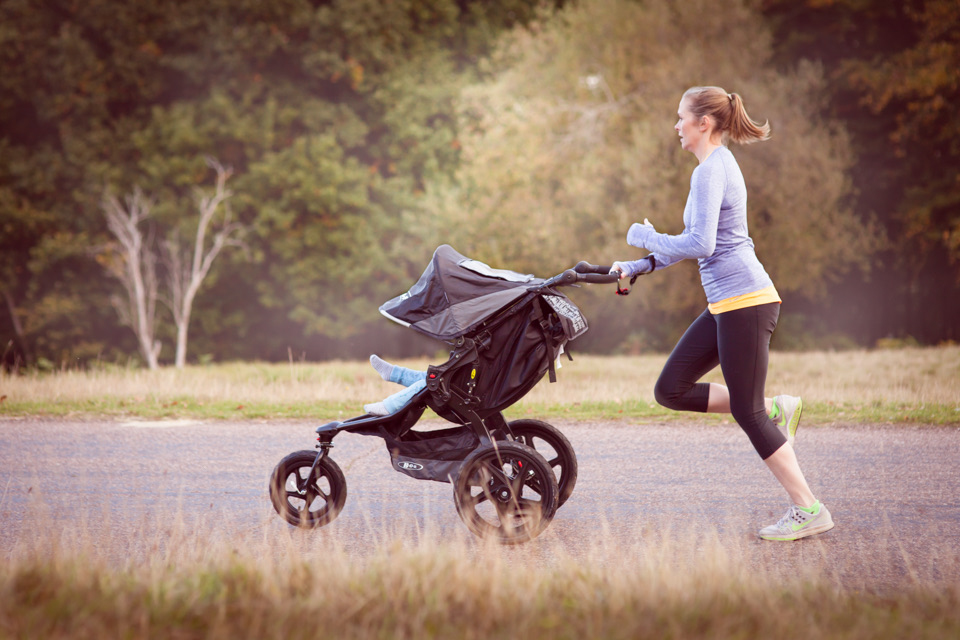When can I return to running?
Wendy Rumble
This article is written by Sarah Crosby, a Women’s Health Physiotherapist based at Crystal Palace Physio Group in London. She has recently returned to running after the birth of her baby daughter 8 months ago. Sarah is a keen runner and triathlete.
*************************
As a Women's Health Physiotherapist, one of the most common questions asked by post-natal women is "When can I return to running?"
This unfortunately does not have a simple answer and depends on many factors.
There are a wealth of benefits to running that we all know and love; a sense of freedom, a buzz from feel-good hormones, post baby weight loss and feeling energized and healthy.
Before resuming running, it is worth considering that your body may still be recovering from the birth of your baby.
One of the most important things to consider when returning to running is how well your pelvic floor muscles are working. Running is a high impact exercise and your pelvic floor muscles will have to contract thousands of times over a 30 minute run. Approximately 2.5 times more impact occurswhilst running in comparison to walking. Therefore, the muscles need to be strong to be able to work affectively against these forces.
The pelvic floor are a group of muscles that sit like a hammock along the bottom of your pelvis. They support your bladder, bowel and womb. In pregnancy these muscles getstretched by the added weight of your bump. Hormones including relaxin are also produced in pregnancywhichcause the pelvic floor to become more lax.
In addition, if you have a vaginal delivery these muscles will stretch massively and approximately 80% of women will have some degree of perineal tear or need to be cut (episiotomy) to enable the delivery of your baby.
Like any muscle in your body, the pelvic floor needs to recover after an injury or stress. It is imperative to make sure these muscles are strong before you resume running.
The NHS guidelines advise women perform pelvic floor exercises 3 times a day after having a baby (even if you had a C-section). The generic advice is to do 10 x 10 seconds squeezes and 10 x 1 second squeezes. However if you have any pelvic floor problems then the research says that an individualized program is the best way to recover.
The reasons why you should wait until your pelvic floor muscles are super strong to return to running is to:
A) Avoid any leaking (stress incontinence)
B) Avoid pain in your pelvis
C) Reduce the risk of a prolapse of your pelvic organs (often felt as a heaviness or bulging down below).
These are common post-natal symptoms, if you have any of these, you should seek the help of a Women's Health Physiotherapist for treatment before you commence running.
It is a good idea to start some lower impact exercise after having a baby before you begin running. Here are some suggestions and rough timelines to consider:
0-6 weeks: Begin pelvic floor muscle exercises as soon as possible after the birth of your baby, no matter the type of delivery that you had. As soon as you are able, start gentle walking and build up gradually to start conditioning your body gently to exercise.
6-12 weeks: You can begin doing some resistance type exercises or bodyweight exercises as long as you are symptom free! Such as squats and lunges. Incorporate your pelvic floor exercises into your resistance exercises. If you have a local Pilates class now is a good time to resume this but please do make the teacher aware that you have recently had a baby as some exercises may not yet be appropriate.
12 weeks +: Around now you might feel ready to start running but many women won’t either so please listen to your body! If you are breastfeeding then you will still be producing relaxinand these hormones can make it more challenging to return to running, as your tissues may still be more lax. Some women prefer to wait until they stop breastfeeding before they begin running.
A good way to see if your pelvic floor is ready for running is to try this quick test. Jump on the spot with a full bladder and then cough. This might sound ridiculous but if you don't leak then that's a sign your muscles are ready!
Let's start with pointing out its recommended you wait until the manufacturers guideline state the Buggy can be used for running with, circa 6 months. Running with a buggy will challenge you further, but it is a great way to do some exercise with your little one. The pushing whilst running requires extra strength from your abdominals and pelvic floor. Build up the running slowly, you could begin by alternating between walking and jogging i.e. 1 minute walk, 1 minute jog.It is likely to feel very difficult at first! Take it gently and your fitness will improve in time.
It is imperative that you keep a good running posture behind the buggy. You will need to lean slightly forward, leading from the chest and bending at your hips. Your shoulders should stay down and back and keep your head up!
Lastly,remember to wear a very supportive sports bra (you might want to wear two!)and a good pair of trainers, your feet may well have grown during pregnancy.
If you have any other concerns about your body and returning to exercise after having a baby such as back pain, tummy muscle separation or other aches and pains then please consult your GP or a women’s health specialist for further advice.









